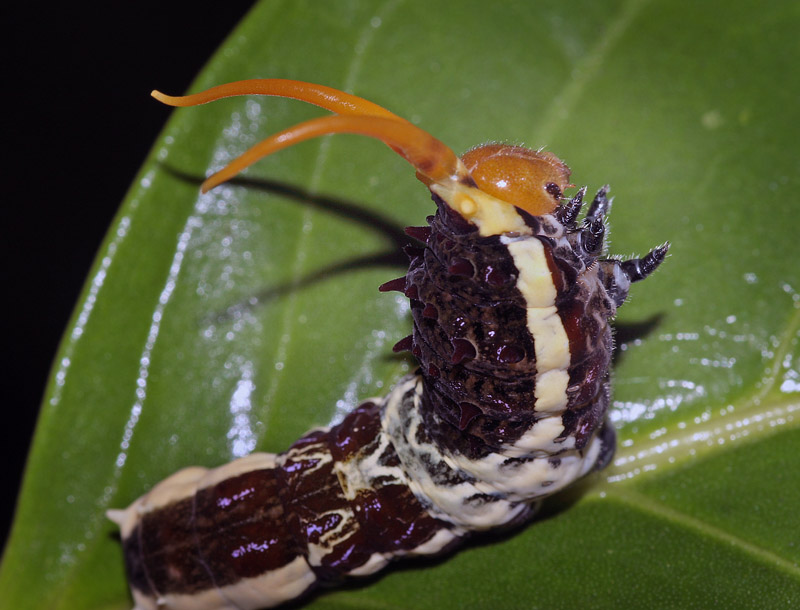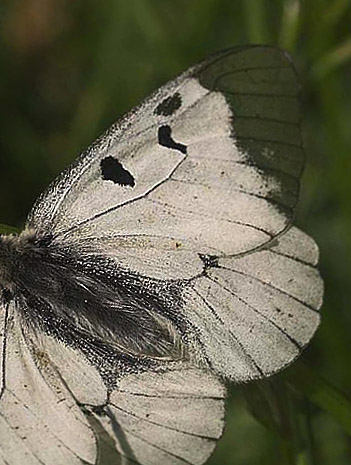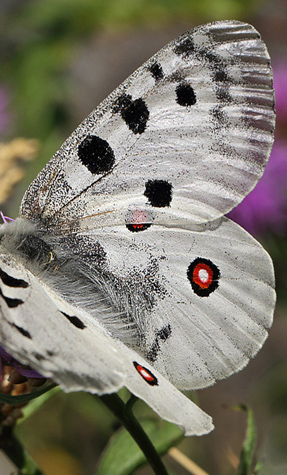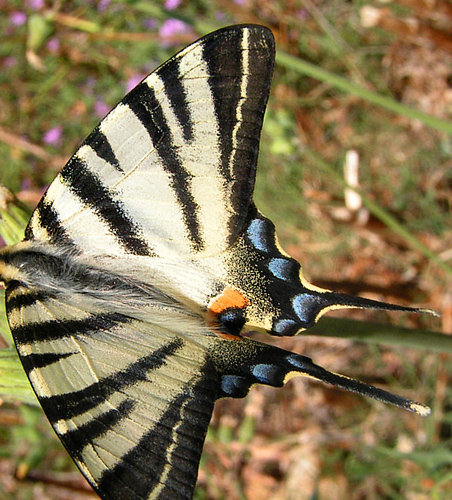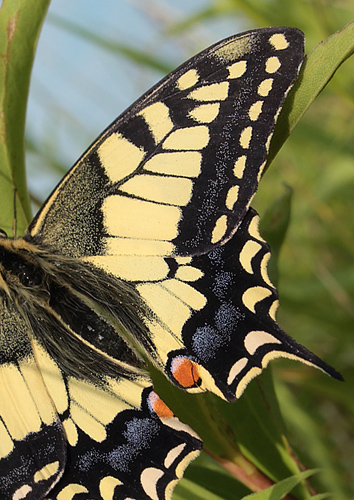The Swallowtail
butterflies,
Papilionidae (Latreille, 1802)
are large,
colorful butterflies, and include over 550
species. Though the majority are tropical,
members of the family inhabit every continent
except Antarctica. The family includes the
largest butterflies in the world, the birdwing
butterflies of the genus Ornithoptera from Oceanian and
Australian region..
Swallowtails have a number of distinctive
features; for example, the Papilionidae caterpillar bears a
repugnatorial organ called the osmeterium on its
prothorax. The osmeterium normally remains
hidden, but when threatened, the larva turns it
outward through a transverse dorsal groove by
inflating it with fluid.
The forked appearance in some of the
swallowtails' hindwings, which can be seen when
the butterfly is resting with its wings spread,
gave rise to the common name swallowtail. As for
its formal name, Linnaeus chose Papilio for the type genus, as
papilio is Latin for "butterfly". For
the specific epithets of the genus, Linnaeus
applied the names of Greek figures to the
swallowtails. The type species: Swallowtail, Papilio
machaon
honored Machaon, one of the sons of Asclepius,
mentioned in the Iliad. Further, the species Papilio
homerus
from Jamaica is named after the Greek poet,
Homer.Subfamilies
The genera of extant swallowtails are usually
classified into three subfamilies;
Baroniinae, Parnassiinae, and Papilioninae, the latter two being
further divided in to tribes.
In swallowtails, besides morphological
characteristics, the choice of food plants and
ecological lifestyle reflect phylogeny and
classification.
Evolution; Praepapilioninae
An additional subfamil; Praepapilioninae, consisting of a single
genus Praepapilio, includes two species of
extinct butterflies, each member being described
from single fossils found in a middle Eocene
deposit in Colorado, United States (Durden and
Rose,).
Distribution
As of 2005, 552 extant species have been
identified which are distributed across the
tropical and temperate regions. Various species
inhabit altitudes ranging from sea level to high
mountains, as in the case of most species of
Parnassius. The majority of swallowtail species
and the greatest diversity are found in the
tropics and subtropical regions between 20°N and
20°S,: particularly Southeast Asia, and between
20°N and 40°N in East Asia.
Only 12 species are found in Europe and only one
species, Swallowtail, Papilio
machaon
is found in the British Isles. North America has
40 species, including several tropical species
and Parnassius.
The northernmost swallowtail species is the Siberian Apollo, Parnassius
arcticus,
found in the Arctic Circle in northeastern
Yakutia, at altitudes of 1500 meters above sea
level. In the Himalayas, various Apollo species
such as Common Red Apollo, Parnassius
epaphus,
have been found at altitudes of 6,000 meters
above sea level.
Reference:
Reed, Robert D.; Sperling, Felix A.H. (2006).
"Papilionidae – The Swallowtail
Butterflies". [Tree of
Life Web Project]. Retrieved 7
November 2010.
|
